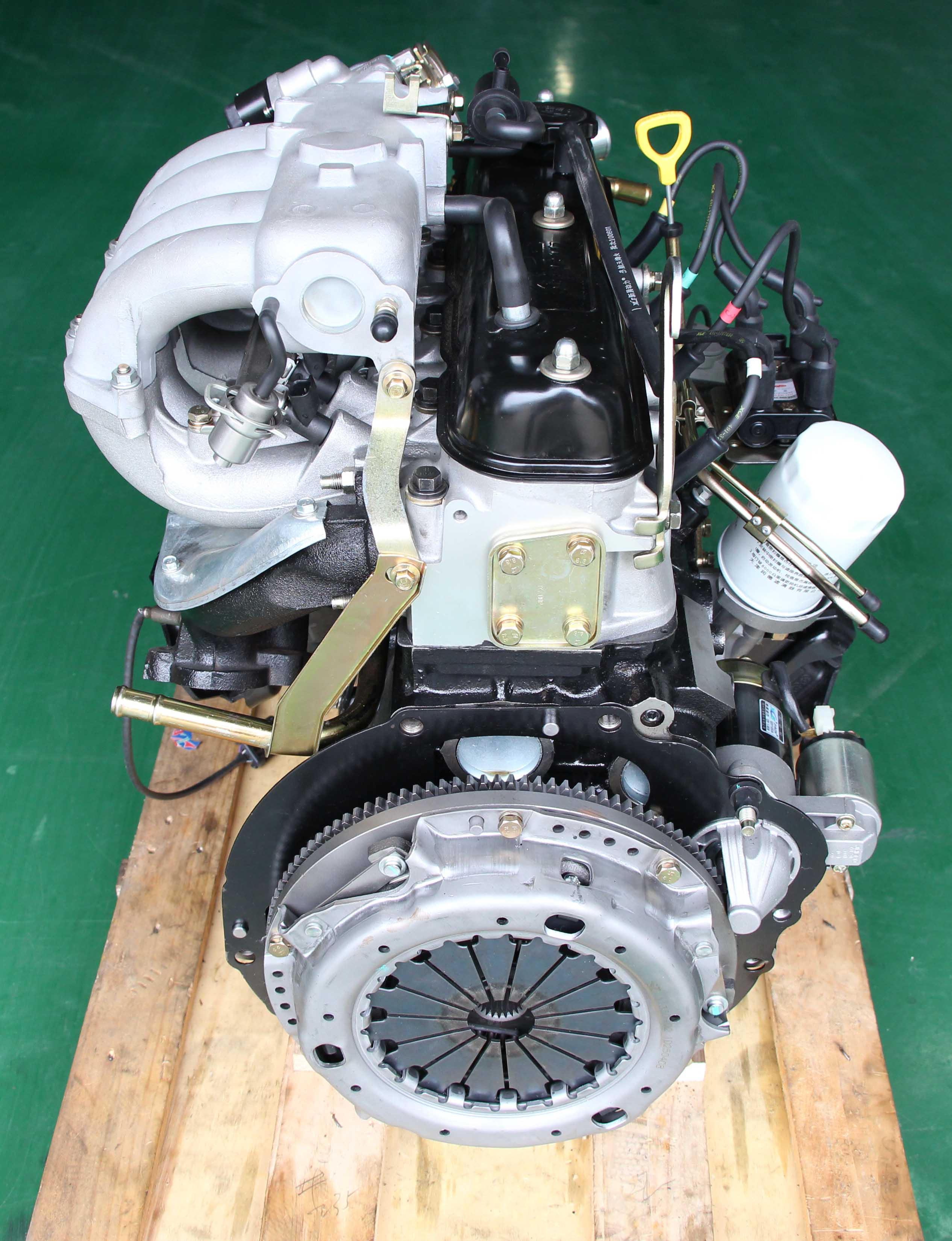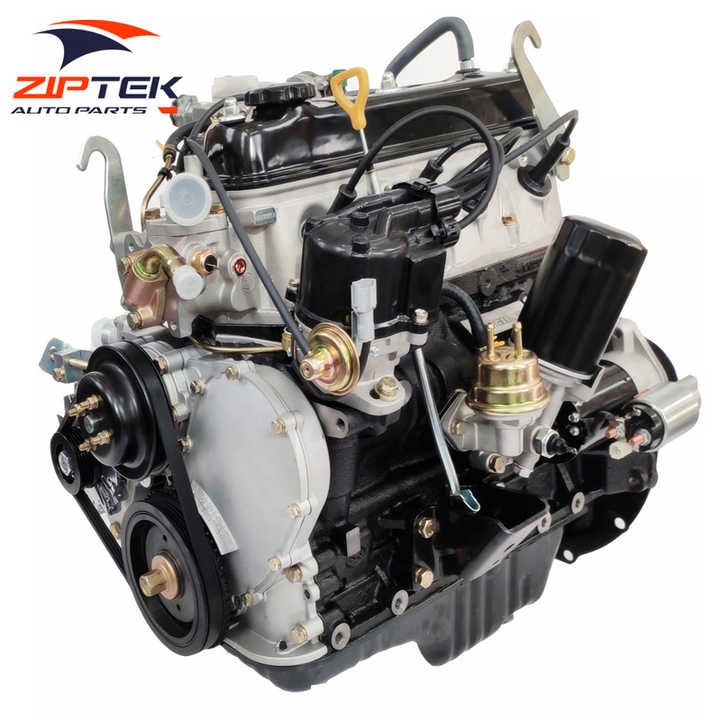How to Troubleshoot Common Issues with the 4Y Engine
How to Troubleshoot Common Issues with the 4Y Engine
Blog Article
Why the Engine Is the Ideal Selection for Performance and Effectiveness in Your Car
The engine continues to be an essential component in automobile layout, largely due to its substantial impact on both efficiency and effectiveness. As improvements in technology allow smaller sized engines to provide impressive power while maximizing fuel economic situation, the integration of functions such as turbocharging and crossbreed systems ends up being progressively essential.
Understanding Engine Kind
Comprehending the different sorts of engines is crucial for maximizing performance and efficiency in vehicle design. The main engine kinds consist of internal combustion engines (ICE), electric engines, and hybrid systems, each offering unique advantages and limitations.
Inner burning engines, which can be further categorized right into fuel and diesel versions, count on the combustion of fuel to generate power. Gas engines normally offer greater RPMs and much better acceleration, while diesel engines are understood for their torque and gas performance, making them ideal for sturdy applications.
Electric engines, on the other hand, utilize electrical motors powered by batteries or fuel cells. They provide instant torque shipment, resulting in smooth acceleration and reduced discharges. The efficiency of electric engines is substantially more than that of ICEs, making them a preferred selection for eco-conscious customers.
Hybrid systems combine both interior burning and electrical engines, leveraging the strengths of both modern technologies. They enhance gas consumption by utilizing electrical power at reduced rates and switching to fuel or diesel for higher speeds or heavier loads.
Choosing the ideal engine kind is necessary for attaining wanted performance metrics and environmental sustainability in contemporary automobile engineering.
The Impact of Engine Dimension
Engine size regularly plays a crucial function in determining a vehicle's performance and efficiency. Generally measured in litres or cubic centimeters, engine size straight affects the power result and torque characteristics of a vehicle.
However, raised engine size often associates with lessened gas performance. Larger engines take in even more fuel, causing higher exhausts and operational costs. As a result, manufacturers need to balance the demand for power with the demand for fuel economic climate. Smaller engines can provide sufficient efficiency for everyday driving while advertising much better efficiency, making them a popular option in mid-size and portable cars.
Additionally, innovations in engine layout, such as turbocharging and straight gas injection, allow smaller sized engines to achieve power degrees equivalent to their larger equivalents. This fad stresses the importance of not exclusively concentrating on engine size yet additionally taking into consideration general vehicle design and technology (4y engine). Inevitably, the influence of engine dimension on performance and performance highlights the demand for customers to examine their particular driving choices and requirements when picking an automobile
Advanced Engine Technologies
Advancements in engine technologies have actually dramatically reshaped the landscape of vehicle efficiency and efficiency, structure upon the fundamental concepts developed by engine size. Especially, innovations such as turbocharging and direct gas injection have actually made it possible for smaller sized engines to provide power levels previously connected with bigger counterparts. Turbochargers press air getting in the engine, permitting for raised power result without a corresponding boost in engine dimension, while direct shot enhances gas delivery, enhancing combustion performance.
In addition, variable shutoff timing systems have actually arised as a critical technology, permitting engines to readjust shutoff procedure based upon driving conditions. This adaptability improves both efficiency throughout acceleration and fuel effectiveness during cruising. Crossbreed and electric engine technologies better show the shift in vehicle style, combining typical inner burning engines with electric motors to optimize efficiency while decreasing exhausts.
Moreover, innovations in materials science have led to lighter, extra durable engine parts, even more improving efficiency and long life. The combination of advanced electronics and engine control units also enables for real-time modifications, ensuring optimum performance across numerous problems. Collectively, these innovative engine modern technologies not only boost vehicle efficiency however likewise add to a much more sustainable automotive future, showing the continuous advancement of engine design.
Harmonizing Power and Performance
Striking a balance in between power and performance is essential in modern vehicle style as makers look for to fulfill increasingly stringent emissions laws while satisfying consumer demand for performance (4y engine). The challenge hinges on maximizing engine qualities to deliver robust power output without sacrificing gas economic climate
To attain this balance, designers utilize numerous approaches, such as turbocharging, which improves engine power by forcing in more air, permitting a smaller sized engine displacement that enhances fuel effectiveness. Variable valve timing innovations additionally play a considerable function, making it possible for engines to change their efficiency attributes based on driving problems, thereby enhancing both power and performance.
Furthermore, advancements in materials and manufacturing techniques have resulted in lighter engine elements, which reduce general automobile weight and boost fuel efficiency without jeopardizing power. Crossbreed innovations have actually additionally become a practical remedy, integrating traditional interior burning engines with electric powertrains to offer a boost in efficiency while maintaining reduced discharges.

Future Patterns in Engine Design

In addition, the advancement of innovative products, such as high-strength alloys and light-weight composites, is readied to change engine components. These products not just minimize weight however also improve thermal effectiveness, consequently optimizing Extra resources efficiency. Additionally, makers are checking out variable compression ratios, permitting engines to adjust to different driving conditions, improving both power output and fuel economic situation.
Better, the increase of expert system and artificial intelligence in engine design is making it possible for anticipating maintenance and real-time efficiency optimization. This technology can bring about engines that self-adjust for optimal efficiency based upon driving patterns.

Verdict
In verdict, the engine offers as an important element in achieving optimum efficiency and effectiveness in modern automobiles. The official source interaction in between engine size and design continues to develop, driving developments that stabilize thrilling performance with environmental sustainability.
Furthermore, advancements in engine layout, such as turbocharging and direct fuel shot, enable smaller sized engines to achieve power levels comparable to their larger equivalents.Advancements in engine technologies have actually dramatically reshaped the landscape of automotive performance and efficiency, structure upon the fundamental ideas established by engine size. Turbochargers press air getting in the engine, allowing for boosted power outcome without an equivalent increase in engine dimension, while straight shot maximizes fuel distribution, enhancing combustion performance.
Crossbreed and electrical engine technologies better illustrate the change in auto layout, combining conventional interior combustion web engines with electric motors to optimize performance while decreasing exhausts.
Collectively, these innovative engine innovations not just boost lorry efficiency however additionally add to a more sustainable automobile future, demonstrating the ongoing advancement of engine design. (4y engine)
Report this page